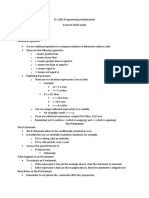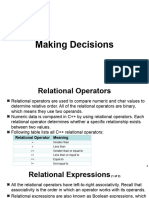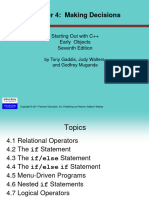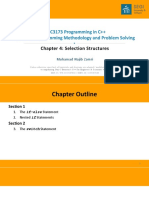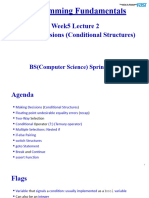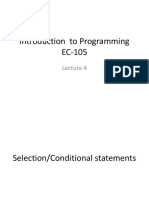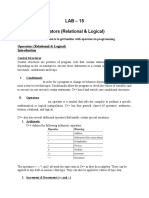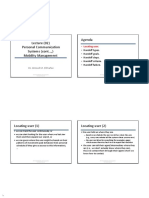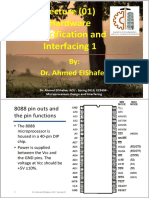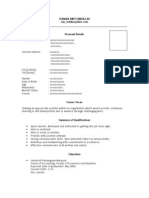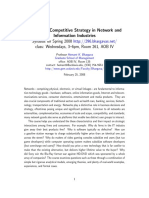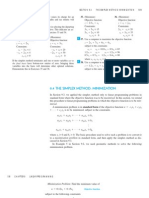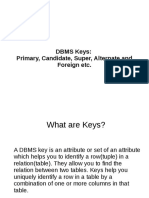0% found this document useful (0 votes)
25 views64 pagesECE151 - Lecture 4
The document provides an overview of relational operators, conditional statements, and logical operators in programming, particularly focusing on their usage in decision-making constructs like if, if/else, and switch statements. It explains how to evaluate expressions, manage multiple conditions, and validate user input, along with examples and best practices for coding. Additionally, it discusses the importance of variable scope and the implications of using the same variable names in nested blocks.
Uploaded by
shafee001Copyright
© © All Rights Reserved
We take content rights seriously. If you suspect this is your content, claim it here.
Available Formats
Download as PDF, TXT or read online on Scribd
0% found this document useful (0 votes)
25 views64 pagesECE151 - Lecture 4
The document provides an overview of relational operators, conditional statements, and logical operators in programming, particularly focusing on their usage in decision-making constructs like if, if/else, and switch statements. It explains how to evaluate expressions, manage multiple conditions, and validate user input, along with examples and best practices for coding. Additionally, it discusses the importance of variable scope and the implications of using the same variable names in nested blocks.
Uploaded by
shafee001Copyright
© © All Rights Reserved
We take content rights seriously. If you suspect this is your content, claim it here.
Available Formats
Download as PDF, TXT or read online on Scribd
/ 64


